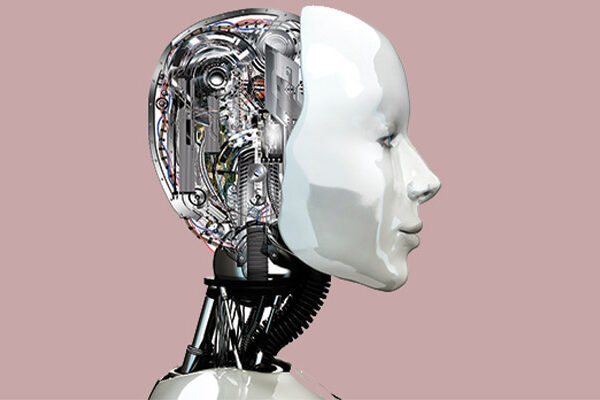Machine learning projects can benefit greatly from automated testing because it can produce lasting changes. However, when ML is added to test automation, it accomplishes more. Continue reading to learn what they are.
Table of Contents
Automated Testing: What Is It?
Automated testing is the process by which testers examine software and identify any potential flaws using specialized tools. The popularity of agile development and continuous integration (CI) has only recently grown despite the fact that it has been around since the early 1990s.
The development process would not be complete without automated testing. Early bug and defect detection can help save time and money later on by preventing them from occurring in the first place. As a result of being less subject to human error, automated tests are also more trustworthy than manual tests.
Compared to manual testing, the automated testing process has many benefits. These actions consist of:
- Reduced developer effort and overall cost
- Improve quality and consistency
- Faster release cycle
- Easily distribute tests across multiple devices or locations
- Better reporting and other features
Different Types Of Automated Tests In Machine Learning
Smoke Testing
The simplest type of testing, known as smoke testing, should be started as soon as possible. Smoke testing is primarily used to make sure that the code functions as intended. Although it might seem unimportant, this test is useful in ML projects.
A lot of different packages and libraries are typically used in ML projects. These packages occasionally offer fresh updates. The issue is that new updates can occasionally change how the package functions. There might be changes in the logic even if there aren’t any obvious changes in the code, which leads to more serious issues. Additionally, we might want to use an earlier version of a more reliable, thoroughly tested package.
Making a requirement is thus a good practice. txt file and run the smoke test with the new test environment. We can install all necessary dependencies and make sure the code works in at least one environment other than the working environment. Installing some outdated dependencies that we locally installed from some outdated projects is a common problem.
Unit Testing
Unit testing is the next logical testing procedure to use after smoke testing. Unit tests isolate and test each unique component separately, as was already mentioned. Essentially, the concept is to divide the code into blocks or units and test each one separately.
Finding bugs is simpler when using unit tests, particularly early in the development cycle. We can examine individual code fragments rather than the entire program, which makes debugging the code much more convenient. Additionally, it aids in the creation of better code because if it’s challenging to isolate specific sections of the code for unit tests, it may indicate that the code is poorly organized.
As a general rule, when we start classifying the code into functions and subclasses, that is the best time to begin writing unit tests. This is due to the fact that writing tests during the early stages of the development of ML projects would be time-consuming, but it might also be too late to write tests for a system that is ready to be deployed.
Data Testing
Data testing, as the name implies, covers all tests pertaining to any type of data testing in an ML project. All prior tests—aside from smoke tests—may frequently include data tests. To give some suggestions and examples of what can be tested when working with data, a separate section on data testing has been included.
Model Testing
Model testing can be a part of unit testing, integration testing, or regression testing, just like with data testing. Since models are infrequently present in traditional software testing, this type of testing is unique to ML projects.
Integration Testing
It’s helpful to test how components interact after unit testing. Integration tests are used for this. Testing a logical section of the ML project as a single unit is what is meant by integration testing rather than testing the entire project.
An integration test would consist of all the unit tests that are included in a functional test, for instance. Integration testing’s primary objective is to confirm that modules interact correctly and adhere to model and system standards when combined. Integration tests run when the pipeline is executed, as opposed to unit tests, which can be run independently. Because of this, even though integration tests can still fail, all unit tests can run successfully.
Assuming that the code has already been tested if it has reached the production phase, traditional software testing only runs tests during the development stage. The production process for ML projects includes integration testing. It is always preferable to combine integration tests with some monitoring logic for ML pipelines that are used infrequently.
Regression Testing
Regression testing is used to ensure that we don’t run into bugs that have already been seen and fixed, i.e. we want to make sure that new changes in the code don’t reintroduce some old bugs. Writing tests to catch the bug and stop further regressions is thus a good practice when submitting bug fixes.
Regression testing can be used in ML projects when the dataset becomes more complex, the model is frequently retrained, and we want to maintain the model’s performance as low as possible. We may add an input sample to the hard case dataset and incorporate that test into our pipeline whenever we come across a challenging input sample where the model generates incorrect conclusions.
Monitoring Machine Learning Tests
It is crucial to understand that the ML project will continue to function properly over time in addition to the fact that it will function properly when it is first released. Monitoring the system using various dashboards that show pertinent graphs and statistics and automatically alert when anomalies happen is a good practice.
Projects involving machine learning must closely monitor their serving systems, training pipelines, and input data. Therefore, developing some automated tests for regularly checking the ML system would be very helpful.
Artificial Intelligence VS. Machine Learning
The simulation of human intelligence in machines is the focus of artificial intelligence. The main objective of artificial intelligence is to create a mechanism for problem-solving that enables the software to handle the tasks without the need for manual programming. Incorporating reasoning, perception, and decision-making abilities into software is the goal of artificial intelligence.
A branch of artificial intelligence known as “machine learning” aims to support and assist machines in a variety of tasks by assisting them in accessing information. AI systems can learn more about learning algorithms and gain new insights with the aid of machine learning (ML) technology.
How Machine Learning Improve Test Automation?
DevOps teams continue to struggle with scaling and managing test automation over time. Machine learning (ML) can be used by development teams during the platform’s test automation authoring and execution phases as well as in post-execution test analysis, which includes spotting trends, patterns, and business impact.
It’s crucial to comprehend the underlying causes of why test automation is so unstable when not using ML techniques before delving into how ML can assist in these two stages of the process:
- Test stability for mobile and web applications is frequently impacted by internal components that are dynamic by definition (for instance, react-native applications) or have been modified by the developer.
- Changes to the data that the test depends on, or more frequently, changes made directly to the application (by adding new screens, buttons, user flows, or user input), can also have an impact on test stability.
- Since non-ML test scripts are static, they are unable to automatically adjust to and deal with the aforementioned changes. Test failures, unstable/flaky tests, build failures, inconsistent test data, and other effects are caused by this inability to adapt.
Let’s examine some specific examples of how machine learning benefits DevOps teams now:
Understanding Extremely High Volumes Of Test Data
Businesses that use agile and DevOps continuous testing run a variety of tests several times per day. Unit, API, functional, accessibility, integration, and other test types are included here.
Decision-making becomes more challenging as a result of the significant increase in test data volume that occurs with each test execution. Managers’ lives are made easier by ML in test reporting and analysis, which helps them understand crucial issues in a product and visualize the most volatile test cases and other areas of concern.
Managers should be able to better segment test data, comprehend trends and patterns, quantify business risk, and make decisions more quickly and continuously with the help of AI/ML systems. For instance, find out which CI tasks are more important or verbose, or which test environments (desktop, web, mobile) are less reliable than others.
Work without artificial intelligence or machine learning is prone to error, necessitates human intervention, and is occasionally impossible. Test data analysis practitioners have the chance to include the following features with AI/ML:
- Test Impact Analysis
- security breach
- Platform-specific flaws
- Test environment instability
- Repeated patterns in test failures
- Application of Element Locator in Brittleness Analysis
Make Actionable Decisions About The Quality Of A Specific Release
Teams that use DevOps deliver new code and value to customers almost daily. Developers greatly benefit from knowing the level of code quality, usability, and other aspects of code quality for each feature.
Teams can improve their maturity and produce better code more quickly by utilizing AI/ML to automatically scan for new code, analyze security issues, and identify test coverage gaps. The code environment, for instance, can identify quality problems and optimize the entire pipeline while comparing any code changes to pull requests. Today, many DevOps teams also use feature flags to gradually reveal new features and to cover them up when issues arise.
By automatically validating and comparing particular versions based on predefined datasets and acceptance criteria, AI/ML algorithms can make such decisions more straightforwardly.
Improve Test Stability With Self-healing And Other Test Impact Analysis (tia) Capabilities
When working on traditional test automation projects, it can be challenging for test engineers to continuously update scripts whenever a new application version is made available for testing or new functionality is added.
The majority of the time, these occurrences cause test automation scripts to fail, either as a result of new element IDs appearing or changing since the last application or as a result of platform-specific features or popups being added and interfering with the test execution flow. New OS versions frequently alter the user interface and add new alerts or security pop-ups on top of applications, particularly in the mobile space. Common test automation scripts will become unusable as a result of these unforeseen events.
With AI/ML and self-healing capabilities, test automation frameworks can automatically detect changes made to element locators (IDs) or screens/flows added in between predefined test automation steps and fix them right away, or add them to the development Personnel’s alerted and suggested quick fixes list. These features will undoubtedly make test scripts embedded in the CI/CD scheduler run more efficiently and with less developer involvement.
The reduction of “noise” inside the duct is an additional benefit. The majority of the brittleness in the tests mentioned above is caused by interruptions in automation scripts rather than actual bugs. The team will have more time to refocus on the actual issue as AI takes proactive measures to eliminate these problems.
Considerations For Using Ml In Test Automation
You now understand how combining machine learning and test automation results in a strong, dependable software testing strategy. Here are six things to think about before implementing machine learning in your business and before automating tests with it:
- User interface (UI) testing that is automated
Even though manual testing is necessary and websites frequently have attractive visuals, the human eye can still fail to notice some page errors. In order to find and validate user interface flaws, machine learning (ML) works best in this situation.
- Do unit tests:
Developers can devote more time to writing software by using machine learning to create and run unit tests instead. In later stages of the product life cycle, writing and maintaining AI-based unit test scripts is also beneficial.
- API testing:
When API testing is used in the real world, comfort and ease frequently vanish. Even without ML/AI, testing APIs can be challenging because it necessitates understanding their functionality and creating test cases and scenarios.
You can log API activity and traffic for analysis and test creation when using test automation with machine learning. However, you must comprehend the nuances of Representational State Transfer (REST) calls and their parameters in order to modify and update tests.
- Several test scripts:
You will need multiple test scripts to be effective because any updates, upgrades, or code changes will require you to modify your test scripts. AI and ML-based tools can forecast whether a test application will need several tests. It saves time and money while assisting you in avoiding running invalid test cases.
- based on AI and ML, creating test data
On datasets, AI models operate. In a similar vein, test scripts need input data to function. Machine learning can be used in test automation to create datasets that include profile photos and details like age and weight.
This information is based on trained ML models that were discovered using production datasets that were already in use. This method produces data sets that are similar to ideal production data for software testing.
- Regression testing using robotic process automation (RPA):
RPA assists in both automating and maintaining current IT systems. It identifies and gathers data while scanning screens, navigating systems, and using functions. All work is automated and carried out using a web or mobile app, which is entirely powered by robots.
Scalability, cost savings, increased productivity, no-code testing, and accurate output are also some of its main benefits.
Conclusion
When considering ML in a DevOps pipeline, one must also take into account how ML can analyze and track ongoing CI builds and point to trends in build acceptance testing, unit or API testing, and other areas of testing. ML algorithms can examine the entire CI pipeline and identify builds that are frequently broken, time-consuming, or ineffective. Today’s reality frequently results in brittle CI builds that fail repeatedly without being properly attended to. Shorter cycles and more stable builds are the immediate benefits of ML’s entry into the process, which leads to quicker feedback for developers and cost savings for the company.
There is no doubt that machine learning (ML) will create new problem categories and taxonomies that will influence the next generation of software defects. The quality and effectiveness of publishing will most definitely improve.




